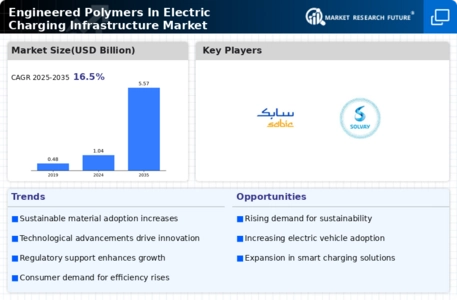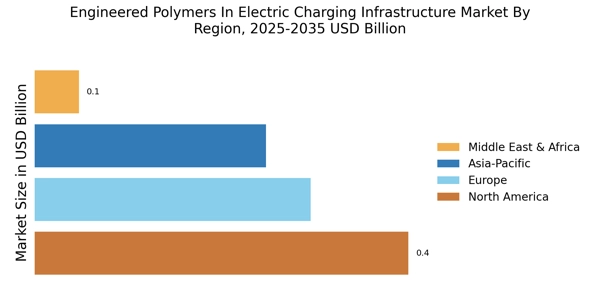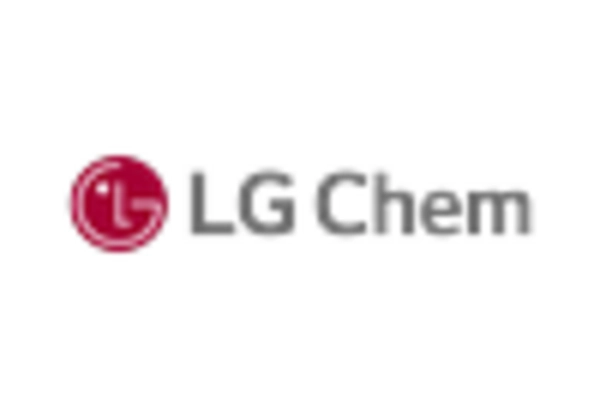Technological Innovations
Technological advancements are reshaping the Engineered Polymers In Electric Charging Infrastructure Market. Innovations in polymer chemistry and processing techniques are leading to the development of high-performance materials that can withstand extreme conditions. For example, the introduction of thermoplastic elastomers has improved the flexibility and resilience of charging cables, making them more user-friendly and durable. The market is expected to witness a compound annual growth rate of 15% over the next five years, driven by these innovations. Additionally, the incorporation of smart technologies, such as IoT-enabled charging stations, is enhancing the functionality of electric charging infrastructure, further increasing the demand for engineered polymers that can support these advanced applications.
Sustainability Initiatives
The increasing emphasis on sustainability is a pivotal driver in the Engineered Polymers In Electric Charging Infrastructure Market. As governments and organizations strive to reduce carbon footprints, the demand for eco-friendly materials is surging. Engineered polymers, known for their durability and recyclability, align with these sustainability goals. For instance, the market for electric vehicles is projected to reach 30 million units by 2030, necessitating a robust charging infrastructure. This growth creates a substantial opportunity for engineered polymers, which can enhance the longevity and efficiency of charging stations while minimizing environmental impact. Furthermore, the integration of sustainable practices in manufacturing engineered polymers is likely to attract investments, thereby propelling market growth.
Rising Electric Vehicle Adoption
The rapid adoption of electric vehicles (EVs) is a significant driver for the Engineered Polymers In Electric Charging Infrastructure Market. As consumers become more environmentally conscious, the shift towards EVs is accelerating, with sales expected to surpass 20 million units annually by 2025. This surge in EV adoption necessitates a comprehensive charging infrastructure, which in turn increases the demand for engineered polymers. These materials are essential for the production of charging stations, connectors, and cables, providing the necessary durability and performance. Furthermore, the expansion of charging networks is likely to create new opportunities for engineered polymer manufacturers, as they seek to innovate and meet the evolving needs of the market.
Market Competition and Collaboration
The competitive landscape of the Engineered Polymers In Electric Charging Infrastructure Market is intensifying, prompting companies to innovate and collaborate. As more players enter the market, the need for differentiation becomes paramount. Companies are increasingly forming strategic partnerships to leverage each other's strengths, particularly in research and development. This collaboration is likely to lead to the creation of advanced engineered polymers that offer superior performance and cost-effectiveness. Additionally, competition is driving down prices, making engineered polymers more accessible for various applications within electric charging infrastructure. The market is expected to evolve rapidly, with companies that can adapt to changing demands and technological advancements likely to emerge as leaders.
Government Regulations and Incentives
Government regulations and incentives play a crucial role in shaping the Engineered Polymers In Electric Charging Infrastructure Market. Many countries are implementing stringent regulations aimed at promoting electric vehicle adoption and reducing greenhouse gas emissions. These regulations often include financial incentives for the installation of electric charging stations, which in turn drives the demand for engineered polymers. For instance, the introduction of tax credits and subsidies for charging infrastructure projects is likely to stimulate market growth. As a result, manufacturers of engineered polymers are increasingly focusing on developing materials that meet regulatory standards while also providing enhanced performance and safety features, thereby positioning themselves favorably in the market.



















Leave a Comment